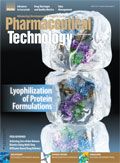Boosting New Antibiotic Drug Development in Europe
With the rising threat of antibiotic resistance and a diminishing R&D pipeline for novel drugs, Europe must step up its game to address this growing problem.
*This article originally appeared in Pharmaceutical Technology Europe*
The threat of antibiotic-resistant bacteria has long been recognised as a public health concern, but the dramatic growth of the problem has alarmed governments, healthcare organisations and the pharmaceutical industry (see Table I). The latest regional data show that each year, approximately 125,000 deaths in the EU are caused by drug-resistant bacteria (1). Furthermore, infections due to multidrug-resistant bacteria in the EU result in extra annual healthcare costs of €1.5 billion, thereby putting additional strain on healthcare systems (1). In light of these figures, there is widespread acknowledgement that the antimicrobial resistance threat has been underestimated and that strong measures must be taken to rectify past mistakes in dealing with it.
Table 1: Pan-European data on antibiotic resistance.
Bacterial infection type
Estimated resistance levels
Streptococcus pneumoniae
8.7%
Staphylococcus aureus
17.8%
Pseudomonas aeruginosa
21%
Klebsiella pneumoniae
25.7%
Enterococcus faecalis
26.7%
Escherichia coli
57.4%
Source: Data from the European Centre for Disease Prevention and Control (1).
One of the trends that unfortunately accompanied the rise in antimicrobial resistance was a steady decline in R&D for new antibiotics. One by one, the major pharmaceutical companies began to exit the antibiotic development field, due to lower perceived returns on investment, and switch to more commercially attractive therapeutic markets. In the absence of any incentives to continue investment in R&D for antibiotics, this pattern has continued to the present day (2). Since 2009, only two new antibiotics for antibacterial infections have been approved by the Food and Drug Administration (FDA) in the US (2). The contrast with previous eras for antibiotic development is striking. Between 1983
and 1987, 16 systemic antibacterial agents were approved (3). At present, the majority of industrial R&D for antibiotics is being conducted by small and mid-sized companies, which have limited resources to bring new products to market.
To improve the situation, new R&D models are being created that represent partnerships between different companies, academic institutions, regulators, patient groups and other interested stakeholders. These efforts have been backed by the European Federation of Pharmaceutical Industries and Associations (EFPIA), which has made novel antibiotic development a high priority area (4). Future R&D will again involve the major players in the pharmaceutical industry, but it will take considerable time for any efforts to translate into new clinically useful drugs.
In Europe, the Innovative Medicines Initiative (IMI) is the largest public-private initiative aimed at speeding up the development of new drugs. IMI serves as a neutral party and builds networks of industrial and academic experts for dedicated projects. Funding comes from the European Commission’s Seventh Framework Programme, which is matched mainly by contributions from EFPIA member pharmaceutical companies.
Although it works across different therapeutic areas, much is expected from IMI regarding the development of new antibiotics to treat resistant infections (5). In 2013, €223.7 million was invested in the antimicrobial resistance program, with €114.7 million coming from EFPIA member companies (5). The COMBACTE project, focused on new ways of designing and implementing efficient clinical trials for novel antibiotics, is one element of this effort. COMBACTE is also part of the New Drugs for Bad Bugs (ND4BB) initiative, IMI’s wider program to target bottlenecks in the development and effective use of novel antibiotics (5, 6). Another part of the ND4BB initiative is ENABLE (European Gram Negative Antibacterial Engine), which involves more than 30 European universities and companies, led by GlaxoSmithKline and Uppsala University (6).
Ongoing multi-stakeholder initiatives
In response to this bleak outlook of antimicrobial resistance, policy and regulatory changes are being considered to encourage the development of new antibiotics by the pharmaceutical industry (7). European regulators and policy makers are increasing their collaborations with each other to create a more conductive R&D climate, as well as tackle existing antimicrobial resistance.
The European Medicines Agency (EMA) is participating in a number of initiatives, particularly international efforts, to limit the development of antibiotic resistance and envisions an important role for regulators in promoting the development of novel antibiotics (8). One high profile initiative is the Transatlantic Task Force on Antimicrobial Resistance (TATFAR), which aims to increase levels of communication, coordination and co-operation between the EU and the US on human and veterinary antimicrobials (9, 10). Its taskforce includes representation from the European Commission, the European Centre for Disease Prevention and Control (ECDC), EMA, FDA, the US Department of Health and Human Services and the National Institutes of Health (9, 10).
In 2012, the taskforce published its first report on the issues in this area and a list of recommendations to be monitored for progress. To ensure that the recommendations will result in concrete actions, TATFAR has requested an extension of its mandate for an additional two years (9, 10). Further monitoring of the recommendations will take place followed by a face-to-face meeting to review implementation of the recommendations and consider the next steps. Among the recommendations, TATFAR stated that policymakers should strongly consider the establishment of significant incentives to stimulate antibacterial drug development. However, this was an open recommendation and since no specific implementation from TATFAR’s side was required, it is unclear how the plan will be implemented and monitored. Nevertheless, prompted by the work of TATFAR, EMA and FDA have had discussions on the exchange of information on possible approaches to drug development for bacterial diseases where limited drugs are available (10). Both agencies are now working on guidelines in this area.
As a separate initiative, the European Commission held a one-day “Joint Conference on Antimicrobial Resistance: State of play of the five-year action plan” in December 2013 (11). The conference, which involved representatives from member states, international organisations, European stakeholders associations and third-world countries, served as a midterm review of the Commission’s own actions to combat the threats from antimicrobial resistance. Among its aims is a more effective EU regulatory framework to facilitate the authorisation of new antibacterial agents.
To further coordinate regional action, European Antibiotic Awareness Day, organised by the ECDC in collaboration with the European Commission, is being held annually on 18 November (1). This European-wide public health initiative provides information to both prescribers and the public in different countries and features the announcement of the latest pan-European data on antibiotic resistance (see Table I). The European Antibiotic Awareness Day has received high profile support from EMA and EFPIA (1, 8).
Outlook
After years of complacency and inactivity regarding antibiotic resistance, the field of novel antibiotic development is receiving a welcome boost through initiatives involving numerous stakeholders. Although the commitment to rectify past mistakes is clearly evident, it will take considerable time to develop new antimicrobial drugs and bring them to market. This current state will be the real test whether the new R&D, regulatory and policy frameworks are fit for purpose. In addition, measures will need to be taken to ensure that the new antibiotics are reserved for situations where no alternatives exist and that other measures to control antimicrobial resistance are not overlooked.
References
- ECDC, “European Antibiotic Awareness Day,” accessed 20 Mar 2014.
- Genetic Engineering and Biotechnology News, “Biopharmas Drive Antibiotic Development,” accessed 20 Mar 2014.
- B. Spellman et al., Alliance for the Prudent Use of Antibiotics, “New Antibiotic Development: Barriers and Opportunities in 2012,” accessed 20 Mar 2014.
- EFPIA, “EFPIA contributes to IMI €223.7 million programme to tackle Antibiotic resistance,” accessed 20 Mar 2014.
- IMI, “COMBACTE, Combatting Bacterial Resistance in Europe,” accessed 20 Mar 2014.
- B3C Newswire, “€85 Million European Programme Targets Novel Antibiotics,” Press Release, 12 Feb 2014.
- G. Daniel, Brookings Institute “Antibiotic Development and Market Failure: No Quick Fix,” accessed 20 Mar 2014.
- EMA, “Antimicrobial resistance,” accessed 20 Mar 2014.
- ECDC, “Transatlantic Taskforce on Antimicrobial Resistance - TATFAR,” accessed 20 Mar 2014.
- ECDC, “Update on the implementation of the recommendations made by TATFAR during the first year after the endorsement of its report,” accessed 20 Mar 2014.
- European Commission, “Joint Conference on Antimicrobial Resistance: State of play of the 5-year action plan,” accessed 20 Mar 2014.
About the Author

Faiz Kermani is a freelance writer based in France.

Drug Solutions Podcast: A Closer Look at mRNA in Oncology and Vaccines
April 30th 2024In this episode fo the Drug Solutions Podcast, etherna’s vice-president of Technology and Innovation, Stefaan De Koker, discusses the merits and challenges of using mRNA as the foundation for therapeutics in oncology as well as for vaccines.
Drug Solutions Podcast: Applying Appropriate Analytics to Drug Development
March 26th 2024In this episode of the Drug Solutions Podcast, Jan Bekker, Vice President of Business Development, Commercial and Technical Operations at BioCina, discusses the latest analytical tools and their applications in the drug development market.
INTERPHEX 2025: Use of Walk-In Chambers for Bio/Pharma Development and Manufacturing
April 2nd 2025Sitting down with the PharmTech Group at INTERPHEX 2025, Christopher Murphy, director of Global Business Development and Service Customer Support at Environmental Specialties, discusses the design and critical role of walk-in chambers in the bio/pharmaceutical industry.